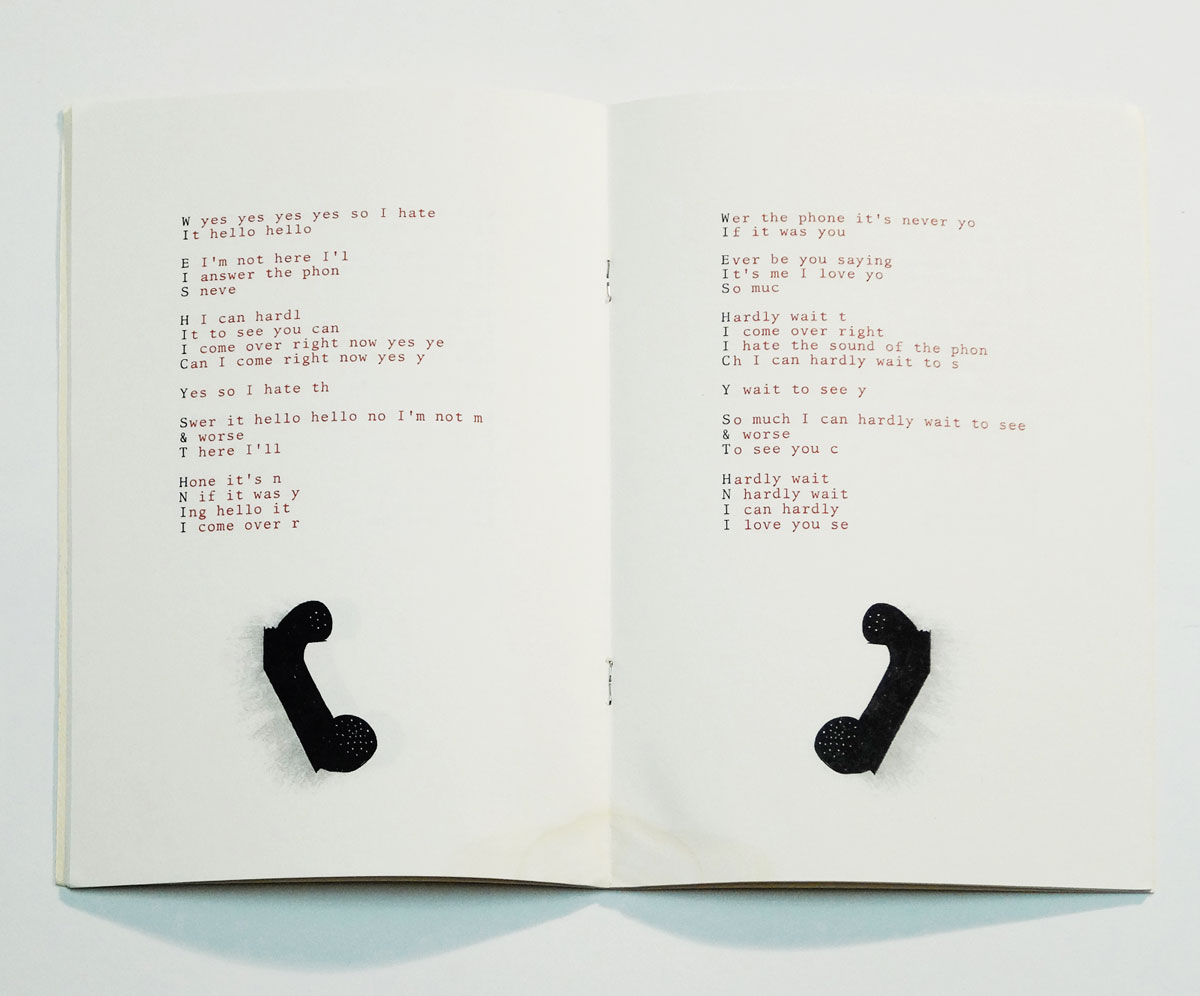Emergency Brake, by Ruth Madievsky – Tavern Books, 2015
Hardcover and Paperback, 80pp
By Nathan Xavier Osorio
—
 Vanishing the physical body has become second nature: we swipe left, unfollow, unfriend, electronically dematerialize one another on the go. Its implicit violence is instamedia’s numbing agent, allowing personhood to be a fickle privilege, not a right. “Atropine” is the title of a poem in Ruth Madievsky’s debut collection, Emergency Brake, which takes its name from a medication used for shutting down a nerve that prohibits the heart to beat freely, a saving grace for victims of cardiac arrest or in this case the desensitized reader. In “Atropine,” brutality against the female body is reappropriated to corrode the callouses encouraged by sensationalist clickbait culture and allow room for heart beating: “I took my first birth control pill / the night my neighbor slammed his girlfriend’s / head into the fridge” (p. 18). Madievsky’s poems are wound-making, tearing at the thick and blurring sheen of the collective and dismissive response to violence against women.
Vanishing the physical body has become second nature: we swipe left, unfollow, unfriend, electronically dematerialize one another on the go. Its implicit violence is instamedia’s numbing agent, allowing personhood to be a fickle privilege, not a right. “Atropine” is the title of a poem in Ruth Madievsky’s debut collection, Emergency Brake, which takes its name from a medication used for shutting down a nerve that prohibits the heart to beat freely, a saving grace for victims of cardiac arrest or in this case the desensitized reader. In “Atropine,” brutality against the female body is reappropriated to corrode the callouses encouraged by sensationalist clickbait culture and allow room for heart beating: “I took my first birth control pill / the night my neighbor slammed his girlfriend’s / head into the fridge” (p. 18). Madievsky’s poems are wound-making, tearing at the thick and blurring sheen of the collective and dismissive response to violence against women.
A poem is the anti-tweet; it prioritizes emotion over data, it isn’t concerned if you’re engaged now or ever, and even in its brevity, can count on lingering through its emotive leaps. This audacity allows the first part of “Shadowboxing,” a three poem series woven throughout the collection, to ask the question, “What it would take to shatter / a wine glass in my hand.” as a guiding star in Emergency Brake’s constellation. Madievsky’s poetry is taut and calls the line dividing pre- and post-violence home, mimetic of our own experience as digital dwellers, constantly anxious for the next trending tragedy. Guided by violence the speaker doesn’t hesitate to cross into the fallout of the excruciating, “[to] want desperately to be queen of something. / Queen of crying in coatrooms, queen of waiting / for the medicine to take” (p .13). Where contemporary media cuts away, disorientating the senses and stunning consumer empathy by creating tolerance to destruction, Madievsky stays put, “If I throw enough lamps, will you come” (p. 13). By pushing past our acquired threshold of pain, Madievsky antagonizes the reader’s attention demanding that we revalue violence and restore it to our sensibilities.
In Cynthia Cruz’s essay “The Disappearers,” Cruz examines the vanishing enacted by artists who are immersed in silence, who “find themselves unable to navigate a world where the loudest, seemingly most articulate voices are [heard, comprehended, and hence, selected as “winners.]” Madievsky’s poetic landscape is carved from the silence that builds in the anticipation of violence against the female body. Her voice’s familiarity with its pervasive micro-aggressions are intimate: “this man who is eyeing my empty shot glass/ as though looking up a skirt.” While her poems are not overtly political, these moments make it difficult to not reexamine this experience, how we use our language to describe it, and art’s responsibility to its uncensored depiction. Cruz describes the visual artist Eva Hesse’s own relationship with disappearing and working the with material that causes it:
…she abandoned painting, moving, instead, to sculpture, making ephemeral works in fiberglass, resin and other materials that were both toxic and delicate. Hesse was aware of the dangers of working with such materials but did not protect herself. She could not, she insisted, work with this distance between herself and her medium.
Madievsky vanishes into the solidification of sexual violence, both its moment of execution and its invisible consequences. The material is as toxic as Hesse’s resin, poisoning the reader out of their media-induced stupor across the span of the 80-page collection. In recasting the discourse in poetry, Emergency Brake’s dismantling of sexual violence isn’t “too complex” or “slippery” to be handled by the mainstream, but tangible, urgent, and even deafening: “I guess I am asking/ why the mind has a shorter memory/ than the body” (p. 42)
The social importance of Emergency Brake doesn’t come at the cost of artful finesse; a cleverly engineered speaker who invites distrust through sly direction guides us through the collection’s gallery of sex and Los Angeles sprawl, like in the second iteration of “Shadowboxing:”
Here is my body making love to its shadow,
music of teeth against teeth,
lips against neck,
my body a basketball hoop,
a flat tennis ball, broken beer bottle,
here is the prescription
I haven’t worked up the nerve to fillHere is Los Angeles
begging someone to hold its hair back while it vomits
a gas mask, a lighter, a butterfly
with its back wings torn off. (p. 28)
The miming of alleyway objects and objects of impossible dimensions builds and fills the room Emergency Brake is housed in. We’re alone with the speaker and the intimacy is severe— the language intermingling with the mystical and the medicated, complicating the division between what we take for fact and what we take for hallucination. In Emergency Brake, the female body, sex, and prescription drugs are the materials of discomfort and violence while simultaneously being adored and revered in their painstaking animation; Madievsky ensures us that these elements aren’t for briefly visiting but for drowning in.
Emergency Brake is now available through Tavern Books
—
Nathan Xavier Osorio is from L.A and is the poetry editor for Columbia: A Journal of Literature and Art #54. He teaches poetry at the Bronx Studio School for Writers and Artists and is a founding member of Art Race Responsibility, an activist group dedicated to dismantling white/cisgender/male supremacy in literature. His poetry and translations have been featured or are forthcoming in Mexico City Lit, diSONARE and The Offing. You can follow him on twitter at @nathanxosorio




